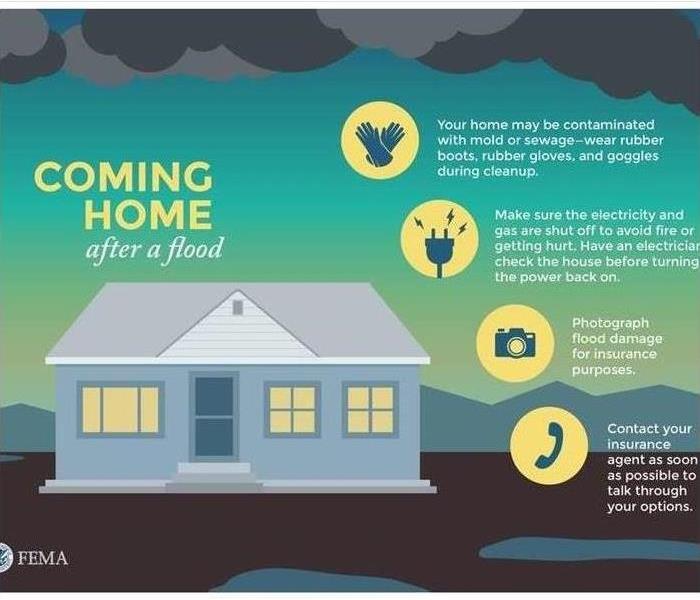Preventing Springtime Water Damage
3/25/2024 (Permalink)
 A water damaged roof caving in.
A water damaged roof caving in.
We all know the old saying, "April showers bring May flowers." With springtime comes heavy downpours, which can bring unwanted surprises to light on your property, like roof leaks or water that comes through your home's foundation. Soggy carpets and dripping ceilings often lead to water damage. Have no fear! Taking the following steps can help prevent water damage in the spring.
Tips to Prevent Springtime Water Damage
- Groom your gutters. Keep the flow flowing! By cleaning your gutters and keeping them damage-free, water will be directed away from your house with downspout extensions.
- Cover up! Using plastic covers around window wells can keep rain from seeping in.
- Show your roof some love. Give your roof some much-needed TLC by replacing missing shingles, any damage from storms or weather, and keep flashing sealed. We promise it's worth the effort!
- Be an Einstein landscaper. When putting decoration or landscaping around your home, make sure to slope the ground away from your foundation. This will help prevent water from pooling and causing future water damage issues.
- It's all about the foundation. By repairing cracks and holes in your home's foundation as soon as they are found, you can keep the water away and minimize your odds of water damage!
Contact the professionals at SERVPRO of Southern Memphis today.
What to do When You Return to your Home After Storm Damage!
12/19/2022 (Permalink)
 Coming home after a flood diagram.
Coming home after a flood diagram.
When storms send floodwater into your home, you don't always know what to do. When is it safe to return to your house? Can you start the cleanup on your own? How you handle a flood will depend on the severity of the damage. It can be helpful to call about storm damage services right after the storm has left your area. You should also try to avoid doing the following:
1. Walking Into Standing Water
Did you know that 6 inches of moving water can cause you to lose your footing? Because even shallow waters can be dangerous, you should avoid walking into any standing water. Your flooded home may be full of stagnant water, but you should still avoid going into it. If the electricity is on, the water could be charged. Storm water could contain dangerous contaminants, too.
2. Waiting To Schedule a Cleanup
Do you want to try to tackle the water damage on your own? Unless you know how to effectively remove flooding and humidity from your house, you should turn to a professional. The sooner you can schedule your cleanup, the better it will be for your home. If you wait too long, you may have increased mold growth in your space.
3. Returning to Your Home Too Soon
While you want your life to return to normal, you need to make sure the flood water is completely gone before you return. Going home too soon can make it harder for the cleanup crew to properly remove excess humidity. The cleanup may require building materials to be replaced, which can leave your home dusty. If you wait until the entire process is finished, you can return to a more normal life right when you move back in.
Storm flood water may cause you to leave your home until the damage can be fixed. Taking the wrong steps after this type of flood can make the restoration process harder than it has to be, so remember what not to do. You can find more detailed information from Ready.gov.

 24/7 Emergency Service
24/7 Emergency Service

